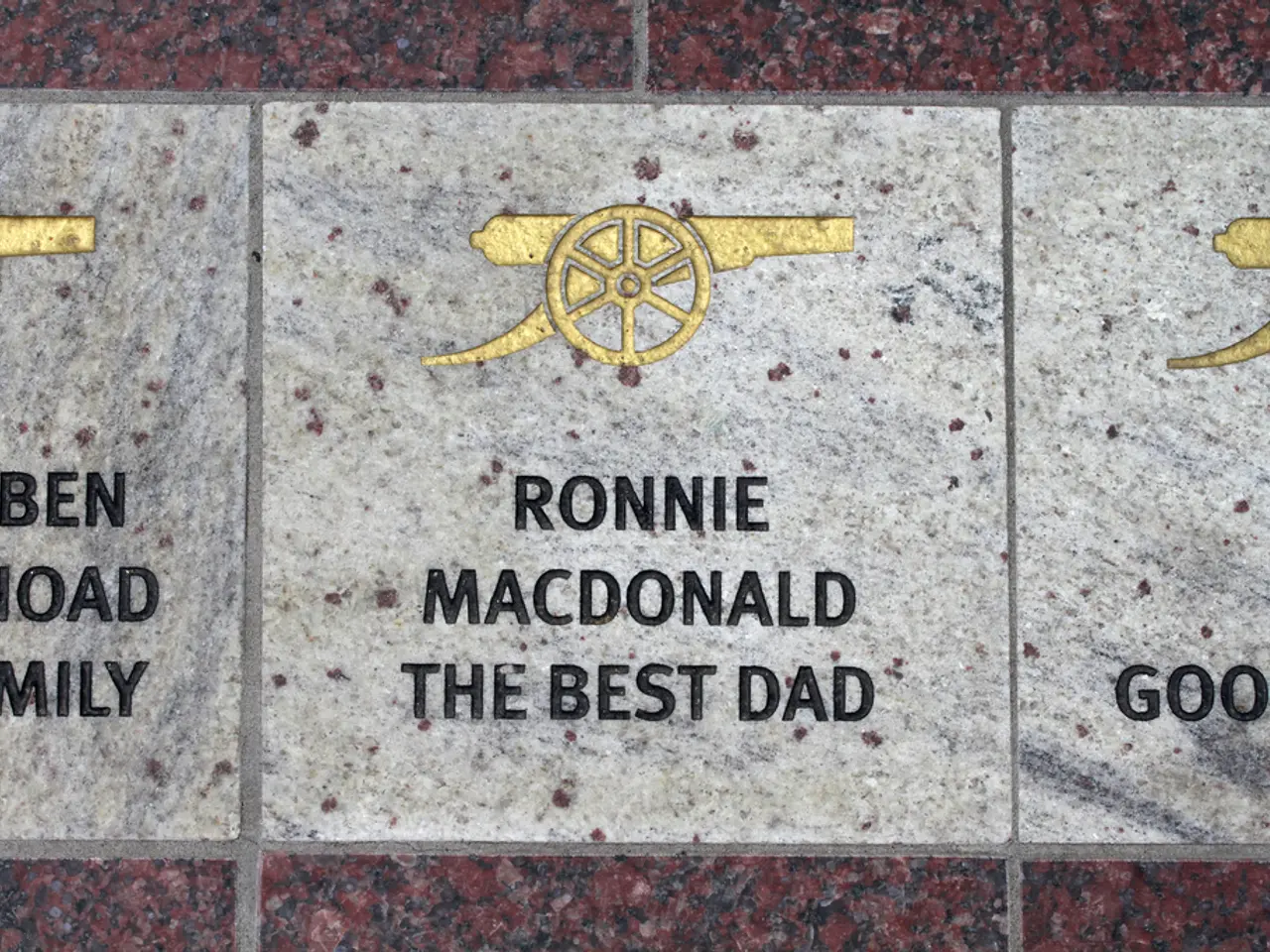Dusseldorf's Kö Street Litter Columns Evoke Imagery of Nazi Dictatorship
New Information Columns on Düsseldorf's Königsallee Reveal the Boulevard's Nazi Era History
In a significant move to shed light on Düsseldorf's past, three information columns have been installed on the prestigious Königsallee. The installation was attended by Hildegard Jakobs, deputy director of the Memorial and Remembrance Site, and was sponsored by Wolfgang Rolshoven, among others.
These columns, a project by District Council 1, the Memorial and Remembrance Site Düsseldorf, and sponsors, delve into the transformation and impact of the Königsallee during the Nazi era. Hildegard Jakobs, author of the book "Power and Splendor. The Düsseldorf Königsallee in National Socialism", has compiled extensive information about the boulevard's history during this period.
The columns provide a glimpse into the social and political climate of the area, highlighting changes in public space usage, the exploitation of architecture and businesses along the Königsallee for Nazi purposes, and the use of the boulevard as a showcase of strength and influence.
Jakobs' book elaborates on this by exploring the cultural and political significance of the Königsallee during the Third Reich. It examines how this prestigious urban space reflected and served the ambitions of Nazi power structures.
Together, these sources paint a picture of Königsallee during the Nazi era as both a site of ostentatious display aligned with Nazi ideology and a symbol of the regime’s control over the city’s public and social spheres.
The columns, which are expected to outlast the memorial year, are positioned as a city's commitment to its history and the shared responsibility for the present. They serve as a real invitation to consciously engage with what happened on Königsallee over 80 years ago.
Each column focuses on a different aspect of the Königsallee's history. The first column, located at the beginning of the boulevard, up to house number 57 on the west side, provides an overview of the history of the Königsallee. The second column, positioned in the middle part of the boulevard and on the east side, focuses on the shops, practices, and cafés in the area.
The third column, located at Graf-Adolf-Platz, sheds light on the stories around the "Bergischer Löwe" and the consequences of World War II. This column, not previously mentioned, adds a new dimension to the narrative, offering a comprehensive understanding of the impact of the Nazi era on the Königsallee.
The unveiling ceremony for all three columns was held with the participation of Mayor Dr. Stephan Keller, District Mayor Annette Klinke, Wolfgang Rolshoven, representatives of the Königsallee Interest Group, and Hines Immobilien company. The columns aim to give visibility to the victims of the Nazi era and anchor the terrible chapter of National Socialism in the Düsseldorf cityscape.
During the Nazi era, the Königsallee was used to project an image of a solidary and classless "people's community". However, medical practices and law firms on Königsallee changed ownership due to discriminatory "race laws". Jewish shops and galleries on the boulevard were systematically boycotted and "aryanized". Established art galleries were pressured not to sell "degenerate art" anymore.
Max Stern and Oskar Manes, the then chairman of the Düsseldorf Retail Association, are mentioned in the first column. Their story is a poignant reminder of the human cost of the Nazi regime's policies.
These information columns offer a valuable resource for those interested in understanding the history of Düsseldorf during the Nazi era. They provide a tangible connection to the past, inviting visitors to reflect on the city's history and its impact on the present.
The information columns on Düsseldorf's Königsallee delve into the social and political climate of the area during the Nazi era, including the exploitation of architecture, businesses, and the use of the boulevard as a symbol of Nazi power. Hildegard Jakobs' book, "Power and Splendor. The Düsseldorf Königsallee in National Socialism", offers further insights into the cultural and political significance of the boulevard during this period.
The third column, located at Graf-Adolf-Platz, sheds light on the stories around the "Bergischer Löwe" and the consequences of World War II, adding a new dimension to the narrative of the Königsallee's history during the Nazi era.






